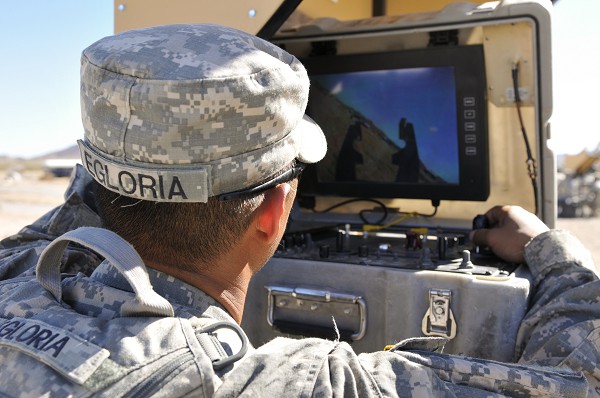 In this U.S. Army photo, Specialist Dennis Egloria, a combat engineer from the 18th Engineering Company, 2nd Battalion, 3rd Infantry Regiment drives a robot through a simulated street searching for explosives at the National Training Center, California.
In this U.S. Army photo, Specialist Dennis Egloria, a combat engineer from the 18th Engineering Company, 2nd Battalion, 3rd Infantry Regiment drives a robot through a simulated street searching for explosives at the National Training Center, California.
National Training Center, CA. (June 28, 2022). We have become all too familiar with the term Improvised Explosive Device (IED) and the terrible carnage they have wrought on our troops. According to the humanitarian group Action On Armed Violence, there were an estimated 172,000 casualties worldwide from IEDs in the past decade (IEDs Past, Present & Future, Overton 2020). Beginning with the first roadside bomb attack in Iraq in 2003, these devices have killed or wounded over 21,000 American servicemembers.
Facing this threat is America’s combat engineers.
The first recorded use of IEDs begins with the invention of gunpowder by the Chinese in the 9th century. Looking for a life extending elixir, the Chinese instead discovered an explosive substance they could pack into tubes to hang outside the walls of their forts. When an enemy reached their gates, someone would light the fuse and, bang, no more enemy.
During the Civil War, IEDs were employed by Confederate soldiers at the Battle of Williamsburg in 1862. Realizing the Union Army was about to overrun their position, the rebels cleverly buried munitions under the Union front causing numerous casualties and also allowed the Confederates to escape.
Today’s combat engineers train with cutting edge technology to defeat these insidious devices at the National Training Center, California. At the Center, engineers receive hands-on experience maneuvering bomb detecting robots through city streets, investigating suspicious piles of trash or rocks, or searching vehicles for signs of explosive devices. With a computer screen and joystick, engineers use these robots to identify and destroy IEDs up to 300 meters from their position.
Our nation is fortunate to have such highly skilled warriors confronting these horrible weapons. We can do our part by donating to SupportOurTroops.Org, a national charity that sustains active-duty troops and their families. Please go to our secure site to make your tax-deductible contribution today. SupportOurTroops.Org/donate


